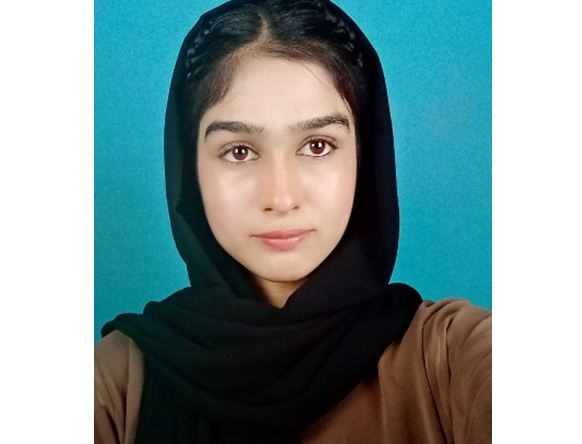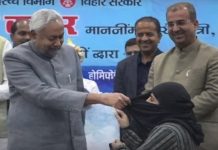Afshan Kanwal
Student BS BBIT University of Okara
Depalpur is one of the most ancient cities in present-day Pakistan, located approximately 25 kilometers from the district headquarters of Okara in the Punjab province. It holds significant historical importance, with records and archaeological evidence pointing to its continuous habitation from ancient times to the present day. The city’s origins are traced back to approximately 200 BCE, placing its foundation contemporaneously with the declining phase of ancient Egyptian civilization.
According to local tradition, the original settlement was established by a figure named Seri Chand, who named it “Srinagar.” Legend holds that Seri Chand was initially childless and it was only after his spiritual guide, Jandarmani, performed a prolonged ascetic ritual—standing on one leg for five months and twenty-seven days—that he was blessed with two sons, Bheem and Lalu Jarai. Seri Chand brought them to the region now known as Depalpur. The current name of the city is attributed to Raja Depal, a Rajput prince and the son of Raja Salwa Han, who is believed to have reconstructed the city, bestowing upon it the name Depalpur.The antiquity of Depalpur is further attested by ancient Indian texts such as the Rigveda, wherein the city is recognized as one of the oldest continuously inhabited urban centers in the Indian subcontinent. Over the centuries, despite suffering repeated devastation, the city was consistently rebuilt upon its ruins, retaining its historical and cultural vibrancy. Historically, the fortified area of the city spanned approximately 100 acres.
Depalpur was situated within the region known as Sapta Sindhu, or “the land of seven rivers”—Ravi, Sutlej, Chenab, Jhelum, Indus, Beas and Kabul—a term used to describe the fertile territory where the early Aryan settlements took root. Alongside cities such as Ajodhan (modern-day Pakpattan) and Qabula, Depalpur was a prominent urban center of that era. The strategic importance of Depalpur became particularly pronounced during the 14th century CE, when it served as a critical defensive outpost for the Delhi Sultanate against Mongol invasions. It was considered the last fortified city between the Khyber Pass and Delhi. Throughout the reigns of the Tughlaqs, Mughals, Sikhs and eventually the British, the city remained on the principal route connecting Delhi and Lahore. Notably, during the reign of Emperor Akbar in the 16th century, the Mughal sovereign halted at Depalpur Fort en route to Pakpattan to pay homage at the shrine of Baba Farid.
During the era of Sikh dominance, Depalpur functioned as a taluqa (an administrative unit). The fort of Depalpur, characterized by rare red-brick walls as wide as 25 feet, still bears remnants of its former grandeur. Its defensive infrastructure included guard posts and a large water-filled moat, which served as an effective barrier against invasions.
In the 13th century, Ghiyas-ud-Din Tughlaq, who was then the governor of Depalpur, defended the fort from Tatar incursions. The fort sustained damages during the siege, but restoration was undertaken in 1244 under Ghiyas-ud-Din’s command. In 1526, during his conquest of the Indian subcontinent, Babur encountered stiff resistance at Depalpur Fort, an event he mentioned in his memoirs, Tuzk-e-Babri. Earlier military campaigns by Muhammad bin Qasim were also said to have reached Depalpur, albeit without success. Sultan Balban utilized the city as a strategic point to halt Mongol advances and it was during this period that the celebrated poet Amir Khusrau was briefly imprisoned in the fort.
When the conqueror Tamerlane invaded the region, Depalpur was noted for its eighty-four towers, eighty-four mosques and eighty-four wells a symbol of its architectural and cultural prominence. Uniquely among regional forts, Depalpur was constructed on a high elevation, rising approximately 300 feet above the surrounding plains. The fort was accessible through four main gates, each named according to its orientation: Delhi Gate (east), Multani Gate (west), Lahori Gate (north) and Bikaneri Gate (south). Today, only the eastern and western gates survive; the others have succumbed to time.Within the fort, a remarkable tunnel was constructed with provisions for air and light, reportedly wide enough for two horses to pass side by side. A royal mosque, still standing, also exists within the fort’s boundaries. In the Lalu Jarai colony, traces of a former Hindu temple remain. Prior to the partition of India and the creation of Pakistan in 1947, members of the Khatri Hindu community used to frequent this temple for traditional head-shaving rituals. Local lore recounts the story of a child named Lalu who, according to legend, sank into the earth due to his mother’s curse; the temple was erected at this site. Although the temple structure no longer stands, a small stone marker still commemorates the location.
Nearby, the sealed entrance of a tunnel, allegedly constructed by Firoz Shah Tughlaq, still exists. Firoz Shah, appointed governor of Depalpur by Muhammad bin Tughlaq, implemented several administrative reforms but is also remembered for his authoritarian rule. Local folklore narrates his unrequited love for the daughter of Raja Raman of Talwandi. Following her rejection, he imposed harsh taxes that caused widespread migration. Eventually, the princess accepted his proposal to alleviate her people’s suffering. Due to this controversial episode, he is still referred to in oral tradition as Nait Moluba man who coerced love through power. Firoz Shah was the last significant ruler to renovate Depalpur Fort.Portions of the fort’s sarai (inn) are still intact, with some rooms occupied by local inhabitants while others remain sealed. The area once contained several Hindu temples visited by pilgrims from across India. However, following the demolition of the Babri Masjid in 1992, local retaliatory sentiment led to the destruction of these temples and the sites were repurposed for residential use.
In contemporary times, Depalpur has evolved into a populous and administratively significant region. With a population estimated at around 1.4 million, it stands as one of the largest tehsils in Pakistan and comprises five union councils. Besides its immense historical value, the region is agriculturally rich and fertile. There is an urgent need for government and heritage conservation authorities to take active measures to preserve and restore the fort of Depalpur, its remaining temples, Haveli Lakha, Bloom Shah’s shrine and other cultural landmarks to safeguard their architectural and historical legacy for future generations.In the last, I would like to express my heartfelt gratitude to Dr. Muhammad AkramZaheer for his invaluable support and encouragement in guiding me to write an insightful write-up about Okara Cantonment. His unwavering motivation, constructive feedback and deep understanding of the subject matter played a vital role in shaping my ideas and strengthening my research. It was through his mentorship that I found the confidence to explore this topic with depth and originality. I am truly thankful for his generous help and academic inspiration

















